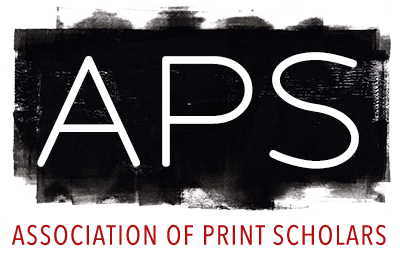CFP: Intermedial Collaborations in Artistic Processes (Historians of Netherlandish Art Conference, Amsterdam/Den Haag, 2-5 Jun 2021)
Art-making in the early modern period necessitated the collaboration of artists. Beyond assistants helping a master in the workshop, artists also worked together between media. Such coordination across materials might transform a cartoon into a tapestry of gold, silk, and wool threads; painters completed the highly sought-after carved altarpieces produced in Brussels and Antwerp, both through the addition of wings and the application of polychromy to sculpture. This panel explores collaborative and intermedial encounters in Northern Europe, ca. 1400–1700, which brought together two or more artists or art forms. Consideration of such coordination between materials challenges the deeply entrenched disciplinary tendency to prioritize the solitary artist and self-contained material. The competition between the arts, especially painting and sculpture, in early modern art has been the subject of much critical study, and collaborations between famous painters, like Jan Brueghel and Peter Paul Rubens, have recently received attention. In contrast, this panel seeks to consider the ways in which both artists and objects worked across and between different media: how the interactivity of artists, named and unnamed, differed from solitary practice, and how artists variously employed media, including mixed media, multimedia, transmedia, and intermedia.
Rather than considering audiences’ reception of objects resulting from intermedial collaboration, this panel focuses on the creation of these works. Papers will examine the structures that enabled or prevented the production of objects that crossed the boundaries of a single material. The panel seeks to understand the processes that led to the collaboration of art makers across media in early modern Northern Europe.
Proposed topics may include, but are not limited to:
- Studies of multimedia, transmedia, or intermedia objects that explore relationships across and between media. Examples might include painted and carved altarpieces, stained glass and architecture, books and their covers, or the painting of musical instruments
- Combining, blending, and fusing of media in the visual and performing arts, such as civic rituals or pageants
- Tracing of artistic processes that require the cooperation of numerous makers, including the collaborative endeavors of print designers and block cutters or woodworkers’ models for metalwork
- Artistic self-consciousness or response to fellow artists
- The role of institutions, guilds, and patrons in fostering or limiting collaborations and combinations of media
- Consideration of the historiographic implications of interartistic and intermedial experiments and the development of the canon of Netherlandish art
As part of 90 minute-sessions, papers should be max. 20 minutes long. Proposals should present new, rather than published research and reflect the current state of scholarship.
Please send proposals of max. 500 words, along with a single-paged curriculum vitae, to the session chair(s): Elizabeth Rice Mattison, University of Toronto (elizabeth.mattison@mail.utoronto.ca) and Laura Tillery, Norwegian University of Science and Technology (laura.tillery@ntnu.no)
Deadline: July 1, 2020.
Applicants will be notified by the session organizers no later than August 1, 2020.
Rather than considering audiences’ reception of objects resulting from intermedial collaboration, this panel focuses on the creation of these works. Papers will examine the structures that enabled or prevented the production of objects that crossed the boundaries of a single material. The panel seeks to understand the processes that led to the collaboration of art makers across media in early modern Northern Europe.
Proposed topics may include, but are not limited to:
- Studies of multimedia, transmedia, or intermedia objects that explore relationships across and between media. Examples might include painted and carved altarpieces, stained glass and architecture, books and their covers, or the painting of musical instruments
- Combining, blending, and fusing of media in the visual and performing arts, such as civic rituals or pageants
- Tracing of artistic processes that require the cooperation of numerous makers, including the collaborative endeavors of print designers and block cutters or woodworkers’ models for metalwork
- Artistic self-consciousness or response to fellow artists
- The role of institutions, guilds, and patrons in fostering or limiting collaborations and combinations of media
- Consideration of the historiographic implications of interartistic and intermedial experiments and the development of the canon of Netherlandish art
As part of 90 minute-sessions, papers should be max. 20 minutes long. Proposals should present new, rather than published research and reflect the current state of scholarship.
Please send proposals of max. 500 words, along with a single-paged curriculum vitae, to the session chair(s): Elizabeth Rice Mattison, University of Toronto (elizabeth.mattison@mail.utoronto.ca) and Laura Tillery, Norwegian University of Science and Technology (laura.tillery@ntnu.no)
Deadline: July 1, 2020.
Applicants will be notified by the session organizers no later than August 1, 2020.
Relevant research areas: Western Europe, Medieval, Renaissance, Baroque, Book arts, Engraving, Etching, Letterpress, Papermaking, Relief printing
[ssba]

Leave a Reply
You must be logged in to post a comment.